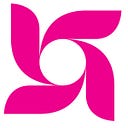Lessons Learned: How to Incorporate a Gender Lens in Graduation Programming/Programs
By Lauren Whitehead, Director of Technical Assistance and Dristy Shrestha, Technical Advisory for the Ultra-Poor Graduation Initiative
Given the highly contextual and multi-dimensional nature of extreme poverty, each BRAC Graduation program is carefully tailored to meet the specific needs of its participants, most of whom are women.
BRAC ensures a judicious prioritization of women empowerment and incorporates gender mainstreaming in three key areas: 1) participant selection, 2) program design, and 3) program implementation. The UPGI Technical Assistance team outlines below how to best incorporate a gender lens into these three key areas.
Given its place as one of the first components in building a Graduation program from the ground up, ensuring a gender lens is placed on participant selection is an incredibly important step if the overall goal to both engage the most marginalized and create a gender transformational process. BRAC’s Graduation programs mainly target economically active, adult women as program participants.¹ In particular, female-headed households are often prioritized in the targeting process as they typically face the greatest vulnerabilities.
By starting off with a gender-focused foundation during the participant selection process, it is then important to conduct a number of assessments to inform the overall program design; gender analysis is incorporated across all of these assessments to ensure that the program design addresses gender-based inequalities and vulnerabilities.
The livelihood selection process is designed to give participants the liberty to choose their own livelihoods (from a list of options determined by a localized market assessment) and to challenge gender norms that restrict participation of women as economic agents or market actors. The list of livelihoods include a range of options that are gender-sensitive and take into account specific needs and limitations (e.g. home-based petty trade that do not require women to be away from home for long periods of time if they have high care work). At the same time, it includes options that challenge existing gender norms, such as livestock trade, which involves women selling in livestock markets where they typically have limited participation.
The financial inclusion and savings component is designed to challenge structural barriers that prevent women, in particular, from accessing financial services. For example, in Bangladesh, BRAC links households to formal financial services so that participants are able to save in their individual accounts, develop financial capabilities, and gain greater exposure to financial services. This can have far-reaching impacts on the family as a whole by elevating female household members to make financial decisions, manage household finances, and help ensure resources are invested into children’s futures.
Lastly, the life skills training and coaching components are designed to provide continuous, hands-on mentorship to program participants with the aim of increasing their confidence, voice, and agency. In households where men are resistant to the participation of women in the program, the coaches/mentors engage them to explain the benefits of empowering women and supporting them through the process. During life skills trainings, coaches/mentors develop participants’ skills and knowledge to address key social and health challenges prevalent in their community (for example, maternal and child health, HIV/AIDS, family planning, child marriage). Similarly, the male members of the household are highly encouraged to join life skills training, especially the sessions focused on the topics that involve their engagement such as joint household decision making, family development plan, and gender-based violence. For example, in the Philippines, when husbands were engaged in the life skills training on violence against women and children, many beneficiaries reported that it led to reduced domestic violence and reconciliation between couples.
In addition to economic indicators (such as increase in income and savings) Graduation criteria also include non-economic indicators such as “no early marriage in the family,” that aim to shift social norms and behaviors towards gender transformative goals. In addition, disaggregated monitoring data and impact evaluations track changes in women’s empowerment through indicators that measure decision-making in the household, confidence, and participation in the community (e.g. leadership role in community groups).
During program implementation, gender sensitivity of the staff is key. For example, in the Philippines, all program staff receive a gender training that includes topics such as: gender roles and norms, gender responsive language, policies, and practices, gender sensitivity tools, gender equality and gender equity, and best practices on effective gender mainstreaming.
Since its establishment, BRAC has learnt and developed a great deal of effective ways of helping women build their capacity through Graduation. However, BRAC recognizes the need to continue to innovate, iterate, learn and develop more effective ways of gender mainstreaming to ultimately achieve gender equality. BRAC is advancing this commitment by incorporating gender-focused research in its pilots and programs. In Egypt for example, BRAC is testing how gender plays a part in deciding what livelihoods a household selects and if it is done through a gender lens. Similarly, other organizations committed to women’s empowerment, such as the BOMA Project, are also contributing to this need for increased learning. Through its pilots and programs that focus on boosting women’s economic empowerment, BOMA and several other organizations have clearly shown that Graduation programming has positive effects on women’s asset accumulation, increases in household decision making, income earned, and overall contribution to household welfare.
Learn more about the ways in which BRAC’s Ultra-Poor Graduation Initiative is applying a gender lens and supporting women’s empowerment by reading our blog Empowering Women to Escape Extreme Poverty.
[1] In the case of Bangladesh (as an example): Historically, the UPG Bangladesh program has targeted economically active, adult women exclusively. As of 2017, program re-design included targeting women predominantly, but include male community members or youth in some cases.
